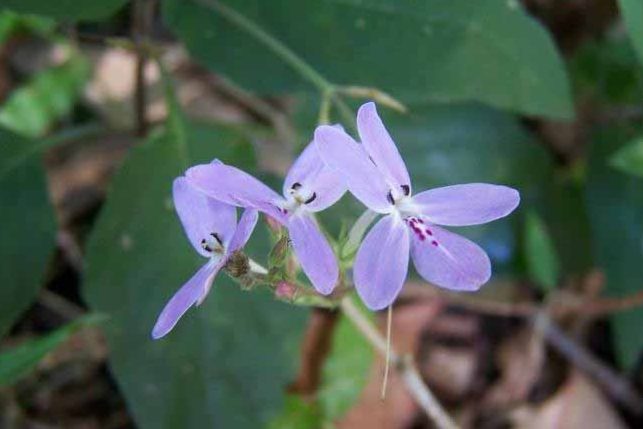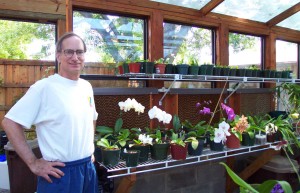
An Eye for Conservation: Preserving nature’s treasures
Going from living and growing local species in the Philippines, to painting watercolors of orchids, and then working to preserve the native species through conservation has been a logical progression for me. I call it my win-win-win program.
Everyone understands my enthusiasm for growing and caring for orchids. If you are reading this, you know fun it can bring. Also, human beings are conditioned to appreciate things we consider art. The question that comes up, however is this: With the ready availability of more species and hybrids than any of us can possibly add to our collection, why should we be so concerned about conservation?

My greenhouse in 2000, after rebuilding it and making it larger
In my explanations I have tried to avoid the more unpleasant aspects, such as how deforestation has left our orchid habitats decimated, or how population growth is forcing our local species into small cramped parks, or how few species we can document before they are gone. The challenge seems hopeless to many, and the motivation for action fades to the low end of the scale.
What motivates people to protect and preserve the environment?
A recent article by Alan Mattingly in the New York Times clearly addresses the question of why we are motivated to work on conservation projects. he article explains that because people naturally procrastinate, they need external goals linked to financial incentives in order to be more productive and increase their earnings. “That sort of incentive has been a hallmark of industrialization” noted Mr. Mattingly. In the author’s view, we have monetized everything we do, and our various efforts are worthwhile only when there is a dollar value attached.
So far, so good. But then the article took an unexpected, but important, turn when the author quoted Richard Conniff, a writer for the Smithsonian. “I am bored of pretending usefulness is the thing that really matters”, says Mr. Conniff. He encourages us to love nature and care for wildlife, not for potential financial gain, but simply for the sake of preserving the beauty of the wild. (Read an excellent article by Mr. Conniff here.)
Is money the only thing that matters?
In our society we expect the reason for caring to be financial incentives, such as new medical cures yet to be discovered in the rainforest. But Mr. Conniff sees it in another way, and his view applies equally well to orchid species in nature. Here is what he says:
“Wildlife is and should be useless in the same way art, music, poetry and even sports are useless. They are useless in the sense that they do nothing more than raise our spirits, make us laugh, or cry, frighten, disturb, and delight us. They connect us not just to what’s weird, different, other, but to a world where we humans do not matter nearly as much as we like to think. And that should be enough.”
If the rules of logic allow me to make an analogy for an analogy, conserving orchid species is like preserving the great art treasures we have today. Indeed, orchids are one of nature’s truly wonderful works of art. We don’t miss, and don’t know about, many great art treasures lost over time. But we do treasure those we know about, and don’t want them to be lost, damaged or stolen. And just like the orchid species lost before being discovered, we can only preserve what we have today, as well as nature’s art in the rainforest or in other backwoods “store rooms” we have yet to open.
So let’s not allow our “museums” of the world go to ruin and thereby lose nature’s irreplaceable treasures. Our rainforests and local orchid habitats are our world heritage sites. Just like our world museums they must be protected. This is a motivation we can all feel good about. It is achievable, as long as we recognize the true value not in a monetary sense, but, like art, something vitally important to preserve for the future.![]()